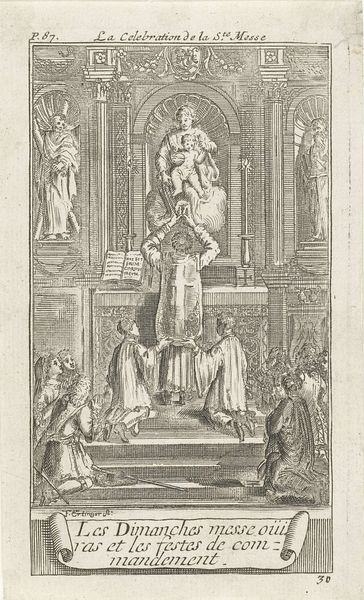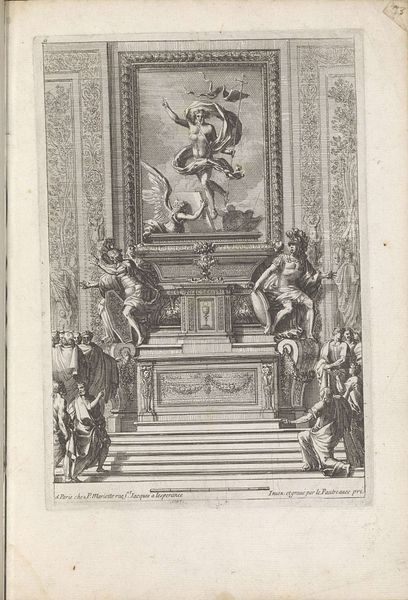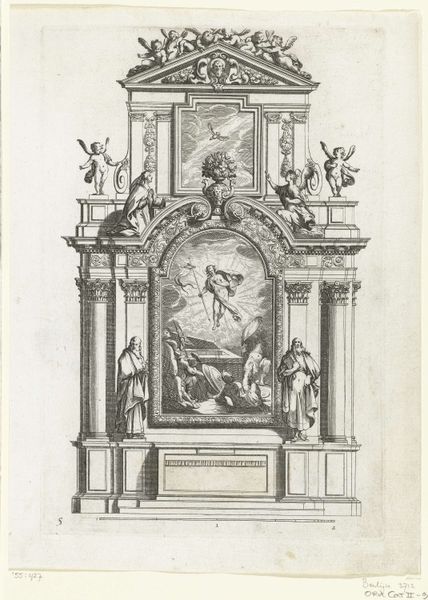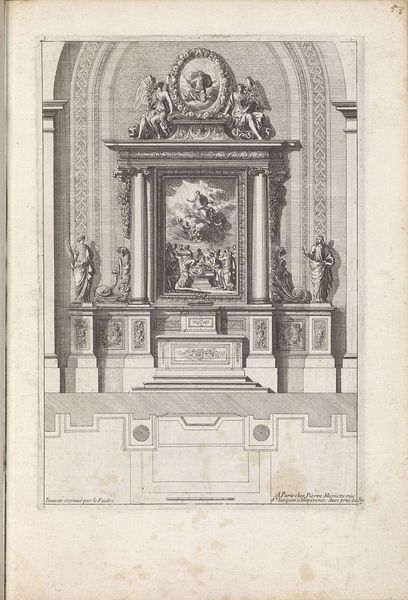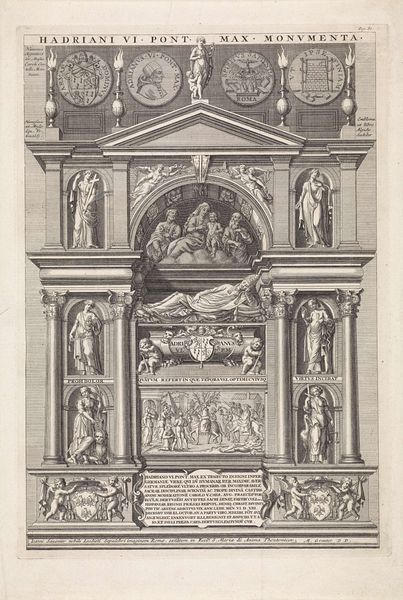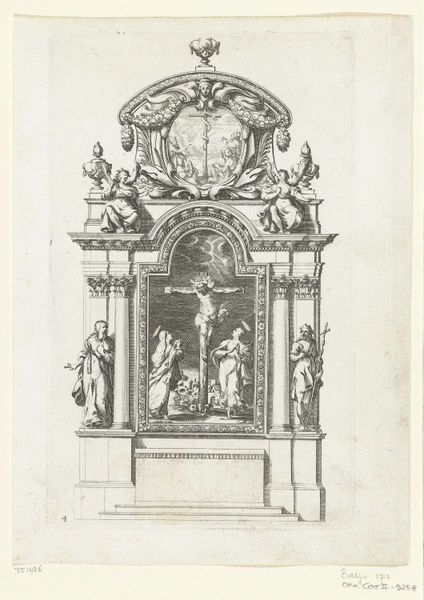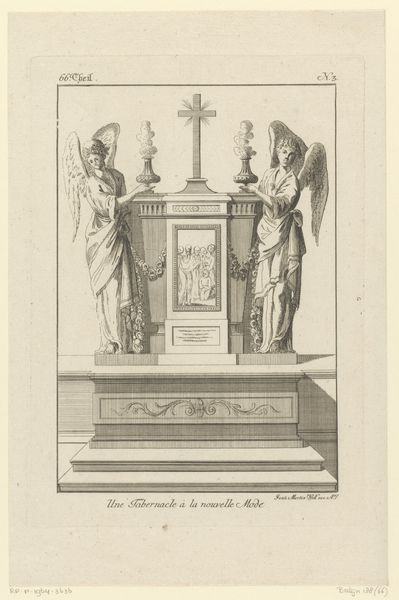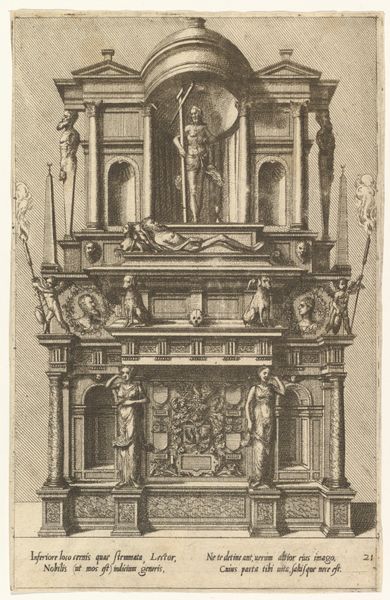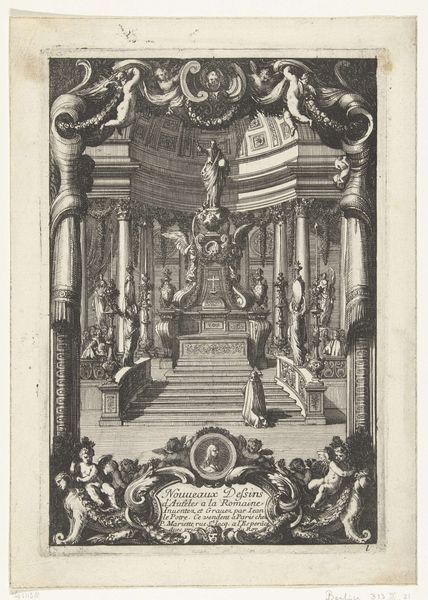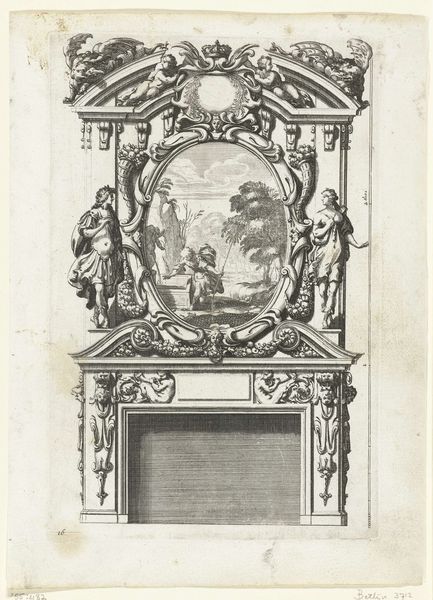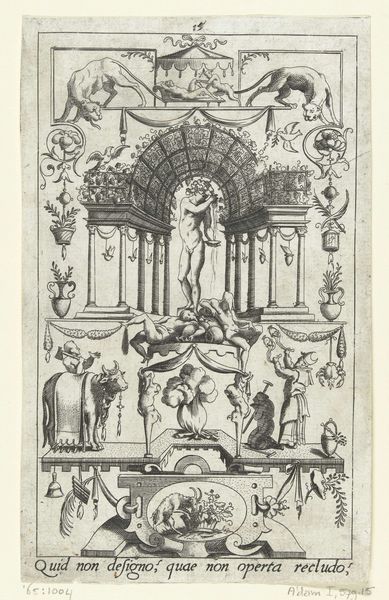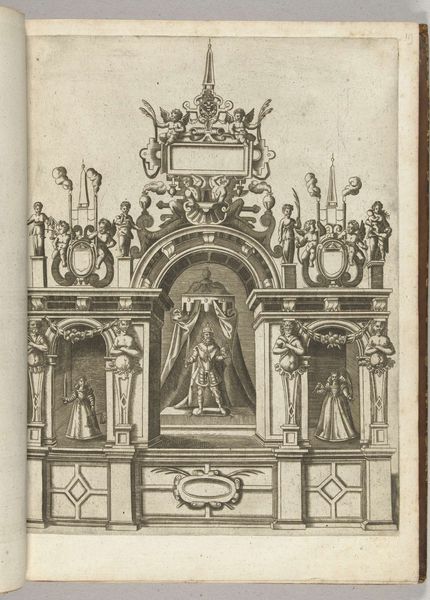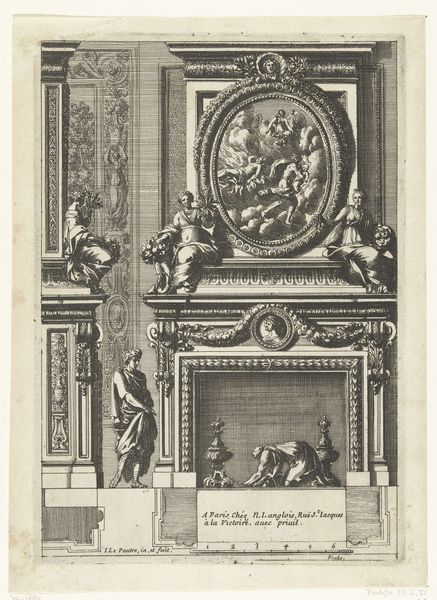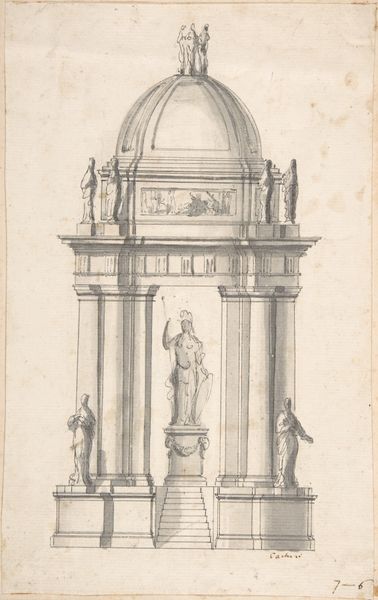
print, engraving
#
baroque
# print
#
old engraving style
#
figuration
#
line
#
history-painting
#
engraving
Dimensions: height 217 mm, width 149 mm
Copyright: Rijks Museum: Open Domain
Curator: This engraving, "Altar with a Painting of the Crucifixion," was created by Jean Lepautre around 1658 to 1670. The work is currently held in the Rijksmuseum collection. Editor: The initial impression is overwhelmingly dramatic. The stark contrasts in the linear work amplify the tragedy, making it feel quite operatic even in its miniature scale. Curator: Indeed, Lepautre uses line and layering quite deliberately. Notice how the architectural elements framing the crucifixion create depth and spatial recession, further enhancing the pictorial narrative. The balanced symmetry—the altar frontal, flanking columns—contribute to its structure. Editor: Symbolically, the figures arranged at the foot of the cross convey profound emotions. Observe their poses—grief, supplication, and acceptance all intertwined in the religious context. Their presence, contrasted with the implied divine, creates a palpable sense of loss, and eventual redemption. The wreath right underneath the crucifix, has connotations of both power and mourning Curator: Quite. Also note how Lepautre differentiates between the textural qualities of the materials—the stone altar, the soft drapery, even the cloudy atmosphere—solely through varied line weights and hatching techniques. The texture gives a realistic visual feel to the scene depicted in the artwork. Editor: Considering its period, and the Baroque obsession with the dramatic, do you believe this interpretation remains consistent through the passage of time and different cultures? It’s not an impartial observation as much as an iconic portrayal, laden with Christian connotations. Curator: That’s an important consideration. The formal composition—the layering of the scenes, the strategic arrangement of figures and the centrality of the cross —still function on a visual level independently. Viewers are immediately drawn to the composition of the scene irrespective of the symbolism they attach. Editor: Precisely. Its enduring quality might, paradoxically, lie in that duality. Thank you. Curator: My pleasure. I learned a great deal as well.
Comments
No comments
Be the first to comment and join the conversation on the ultimate creative platform.
